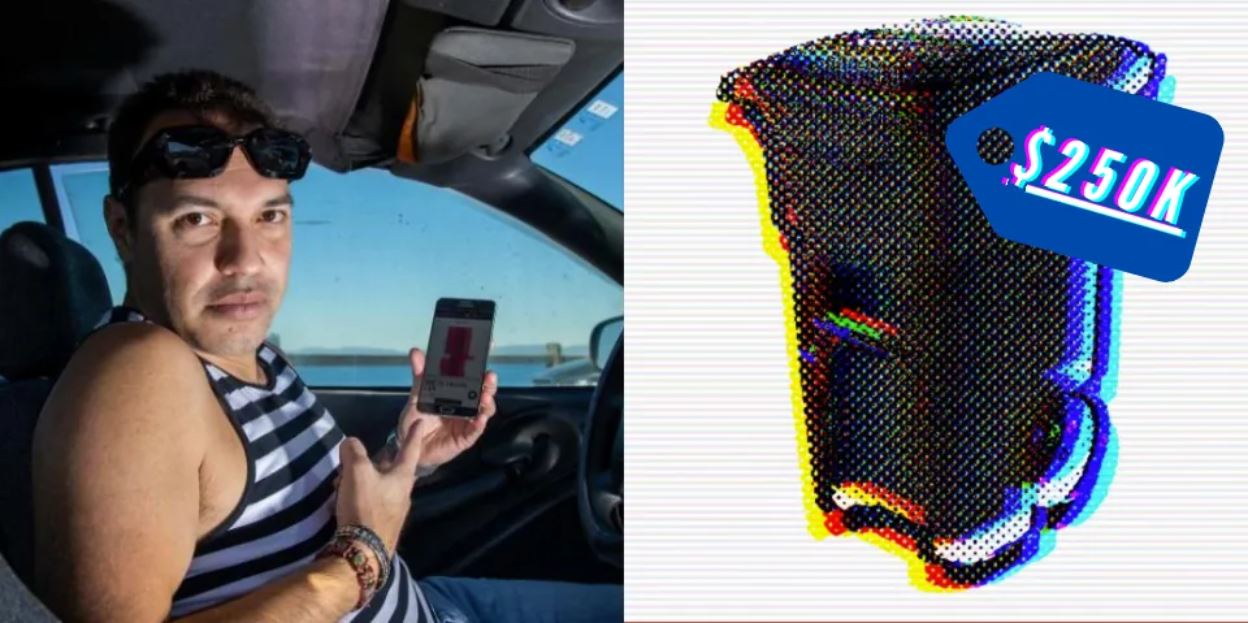One man’s trash is another man’s art.
An American artist has managed to sell an animated image of a trashcan as a non-fungible token (NFT) for the price of a staggering US$250,000 – simply proving again how absurd the prices of digital decentralized art can, and will probably continue to be.
Just recently, the artist going by the pseudonym Robness explained how he took an image of a trashcan he got from the internet and spiced it up with glitchy, psychedelic effects and uploaded it for sale on the NFT platform SuperRare.
The art piece named 64 Gallon Toter had been uploaded a couple of years back, but had been removed from the platform for apparently infringing upon another company’s copyright.

Speaking to AFP, Robness explained that the trashcan artpiece was originally created as “rage art”, and an outlet for him to express his anger at a bunch of things in life.
“I put that up, and it was removed,” he said. “They thought I was taking Home Depot’s picture and breaking copyright. They threatened me legally.”
But to his surprise, the image was reinstated after two years with SuperRare explaining to him in an email that while his work wasn’t initially considered as art by the community, “so much has evolved” that their stance on his piece had changed – and to his advantage.
Eventually, the trashcan NFT became such a meme that it inspired thousands of copycat versions and massively bumped up interest in the original, with a collector eventually contacting Robness personally to find out more about his piece.
“It was one of three trashcans that were in SuperRare and I sold it to a collector,” the artist said. “He called me up because he wanted to know more about the story and we spoke for about 30 to 45 minutes about the whole hilarious story, and he was laughing most of the time.”
“So he wanted to collect it, and I gave him a price and that was that.”
Unsurprisingly, the price at which Robness sold the NFT for (US$250,000) has changed his life for the better – from sleeping in his car and doing odd jobs in 2014 to eventually making enough from his NFTs to keep him afloat comfortably.

This episode only highlights the reality of the NFT market, where many art pieces and collections have sold for hundreds of thousands (sometimes millions) of dollars despite having questionable artistic value.
But like how some fine art pieces (most of which are acquired tastes) can sell for stupid sums of money, many NFT collections have found willing buyers with deep pockets simply through the virtue of hype alone.
Most recently, a Singaporean influencer managed to rake in over US$5.8 million by simply selling images of herself on the OpenSea NFT market platform, while an Indonesian man managed a similar type of success (although slightly less lucrative) by putting up a collection of his selfies taken over a few years for sale as NFTs.
From personal images to abstract art, it really doesn’t appear as if the demand and supply (and by association, price action) of NFTs will find any logical footing anytime soon, no matter what your views on the technology may be.


